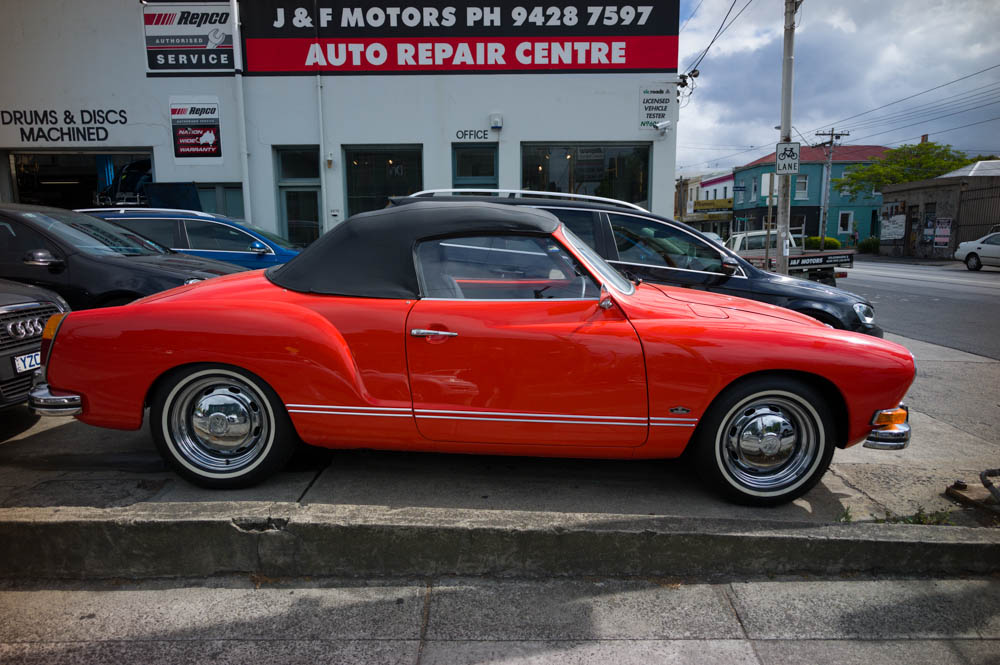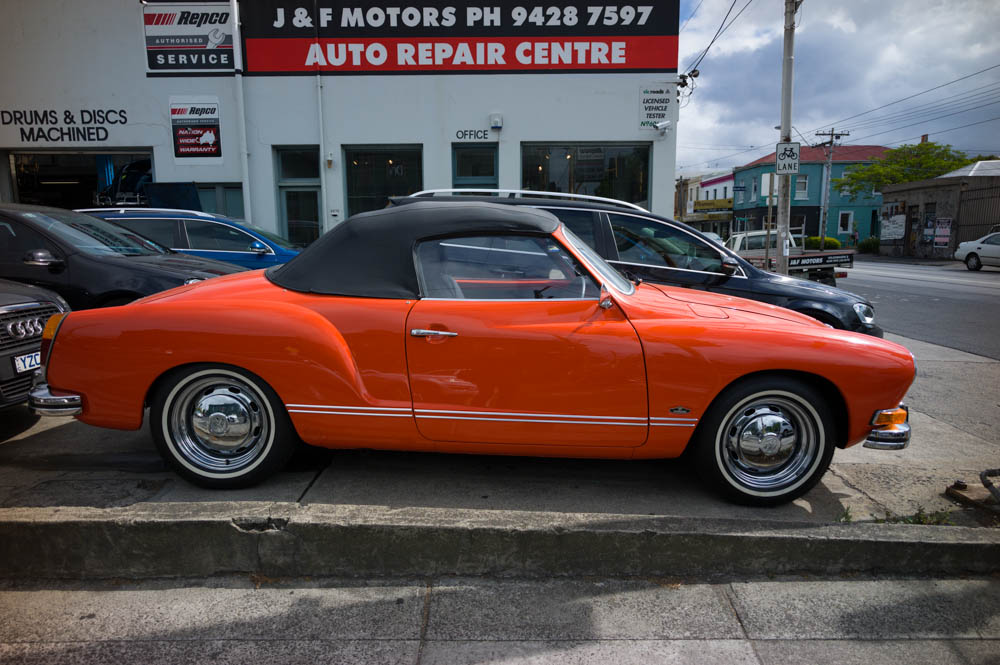Richard G
Veteran
I have some odd problems with red from the M9, sometimes with subjects which caused similar trouble on Fuji Superia. Reds so intense that it bleeds beyond the subject.
I took this yesterday, a lovely burnt orange Karmann Ghia. Out of the camera, shooting DNG compressed, the car was far too red:

Here it is adjusted to the actual colour of the car by pushing the red slider to the right:

Anyone else had such problems?
I took this yesterday, a lovely burnt orange Karmann Ghia. Out of the camera, shooting DNG compressed, the car was far too red:

Here it is adjusted to the actual colour of the car by pushing the red slider to the right:

Anyone else had such problems?

